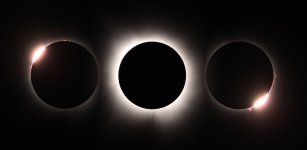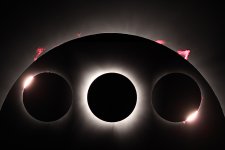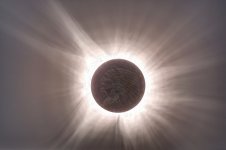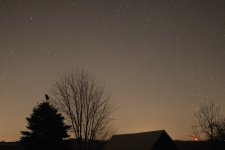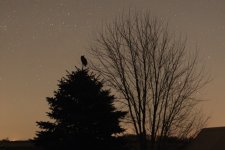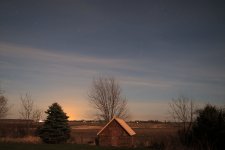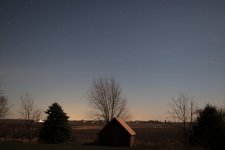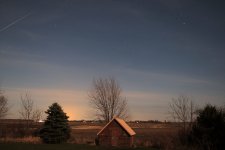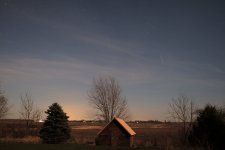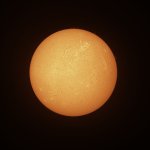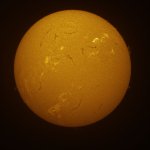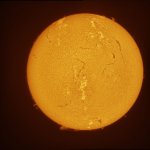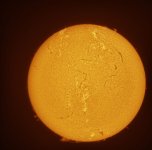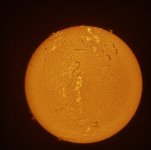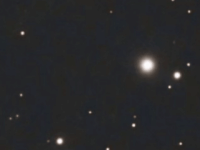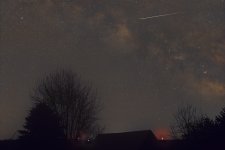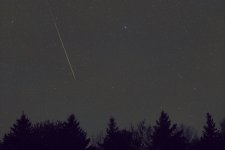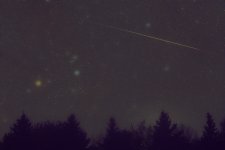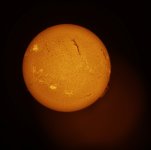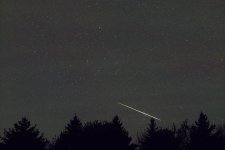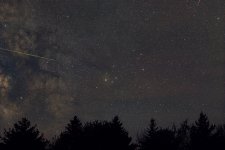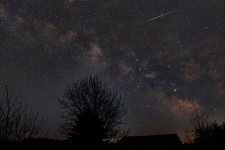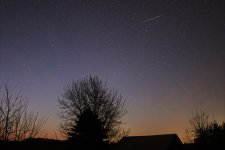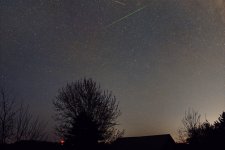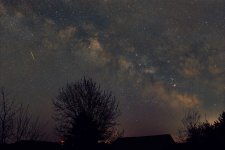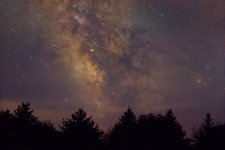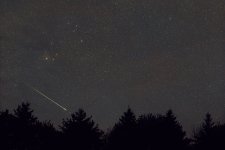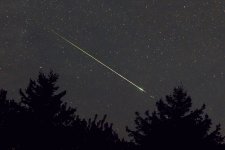I did both.I decided to just observe totality naked eye even though I brought my 11x70 binoculars which would have made them stand out. Yeah I could see them in 4 directions.
You are using an out of date browser. It may not display this or other websites correctly.
You should upgrade or use an alternative browser.
You should upgrade or use an alternative browser.
Astronomy pictures thread
- Thread starter EricTheCat
- Start date
Welcome to the Precious Metals Bug Forums
Welcome to the PMBug forums - a watering hole for folks interested in gold, silver, precious metals, sound money, investing, market and economic news, central bank monetary policies, politics and more.
Why not register an account and join the discussions? When you register an account and log in, you may enjoy additional benefits including no Google ads, market data/charts, access to trade/barter with the community and much more. Registering an account is free - you have nothing to lose!
I added a video to my youtube channel here:
- Messages
- 505
- Reaction score
- 743
- Points
- 268
Thanks! That is a very nice solar image. I don't get my HA setup (quark) out enough. That minor step of having to plug it in and let it warm up somehow kills my motivation.
- Messages
- 505
- Reaction score
- 743
- Points
- 268
- Messages
- 505
- Reaction score
- 743
- Points
- 268
As a public service announcement...My Lunt B1800 blocking filter had a very cruddy "blue glass" filter which needed changing.Stunning photos. I have a Lunt 100 double stack as well. Beautiful scope.
Yes it only costs $10 - https://luntsolarsystems.com/product/blue-glass-for-lunt-blocking-filters/
Lunt has a youtube video explaning the filter replacement procedure -
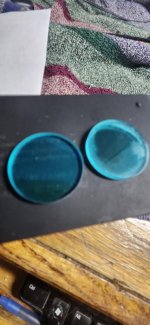
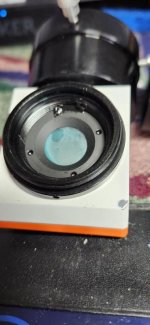
Truly notch images! Very well done.The Sun captured with a Hydrogen Alpha Solar telescope. It's amazing how quickly the Sun's surface changes. Here's two images from today (04/25/2024). The new blue filter in the Lunt blocking filter made a difference and the feathertouch focuser motor is working also.
View attachment 12724View attachment 12725
Clouds and clouds here but getting some much needed rain.
That's a serious amount of detail there FG.
- Messages
- 505
- Reaction score
- 743
- Points
- 268
Thanks Chieftan, there's a lot of activity on the Sun's surface.That's a serious amount of detail there FG.
Imagine a modern day Foolsgold or Eric transported back to the Renaissance or even middle ages with their equipment and showing the world what the Sun, Moon and Stars really looked like. Would they have be lauded or burned at at the stake? 
Very "cool" pics gentlemen!

Very "cool" pics gentlemen!
- Messages
- 505
- Reaction score
- 743
- Points
- 268
Bar-B-QuedImagine a modern day Foolsgold or Eric transported back to the Renaissance or even middle ages with their equipment and showing the world what the Sun, Moon and Stars really looked like. Would they have be lauded or burned at at the stake?
Very "cool" pics gentlemen!
A night of Stars. Made with a Laptop and camera + lens that cost $300.
Very nice! What camera/lens did you use?
- Messages
- 505
- Reaction score
- 743
- Points
- 268
The latest tiny planetary camera from ZWO ASI664MC with the lens that comes with it.Very nice! What camera/lens did you use?
I should try something like that with my ASI678MC one of these nights.The latest tiny planetary camera from ZWO ASI664MC with the lens that comes with it.
- Messages
- 505
- Reaction score
- 743
- Points
- 268
The biggest hurdle is this piece.I should try something like that with my ASI678MC one of these nights.
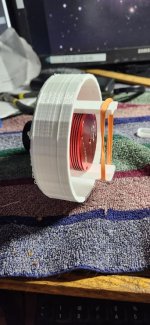
A friend was able to 3D print this top cap and camera holder for me. The STL file can be found at this link - https://www.thingiverse.com/thing:4572383
ZWO ASI 224 PVC Mounting Cap
Then a plastic dome - https://www.amazon.com/dp/B01N29BQN6?tag=projectmana0a-20
A short PVC pipe and end cap is all that needed to complete the project.
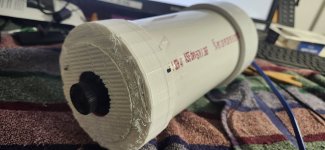
This post may contain affiliate links for which PM Bug gold and silver discussion forum may be compensated.
The biggest hurdle is this piece.
View attachment 12803
A friend was able to 3D print this top cap and camera holder for me. The STL file can be found at this link - https://www.thingiverse.com/thing:4572383
ZWO ASI 224 PVC Mounting Cap
Then a plastic dome - https://www.amazon.com/dp/B01N29BQN6?tag=projectmana0a-20
A short PVC pipe and end cap is all that needed to complete the project.
View attachment 12804
I love it. Eventually I want to do a build like that. In the meantime I might try the camera with the included lens just on a tripod for a night out.
What software have you been using to capture the images?
I miss my old all sky cam but I can't see getting it going with just composite video level resolution and the various issues it has. Time for something new maybe in time for winter.
This post may contain affiliate links for which PM Bug gold and silver discussion forum may be compensated.
- Messages
- 505
- Reaction score
- 743
- Points
- 268
I used sharpcap to capture seven second "stills", then used PiPP to make the video. If you don't have PIPP you can find a link here - https://player-one-astronomy.com/service/software/I love it. Eventually I want to do a build like that. In the meantime I might try the camera with the included lens just on a tripod for a night out.
What software have you been using to capture the images?
I miss my old all sky cam but I can't see getting it going with just composite video level resolution and the various issues it has. Time for something new maybe in time for winter.
Thanks for the info. I haven't tried SharpCap yet. I have only used FireCapture on my planetary camera so far.I used sharpcap to capture seven second "stills", then used PiPP to make the video. If you don't have PIPP you can find a link here - https://player-one-astronomy.com/service/software/
I've used PIPP for a lot of things. Very useful software.
The money shot.
- Messages
- 505
- Reaction score
- 743
- Points
- 268
The All-sky camera was permanently installed today. Special thanks to Matt for 3D printing the camera holder top cap.
Focus is good and the mounting and installation is solid. The ASI664MC anti reflection window was swapped for an IR/cut window so the colors appear normal.Hopefullly it will serve me well for a long time.
Only one problem it has a bug.
Focus is good and the mounting and installation is solid. The ASI664MC anti reflection window was swapped for an IR/cut window so the colors appear normal.Hopefullly it will serve me well for a long time.
Only one problem it has a bug.

